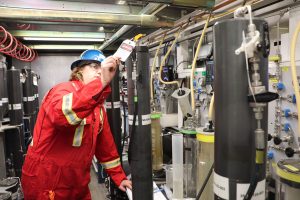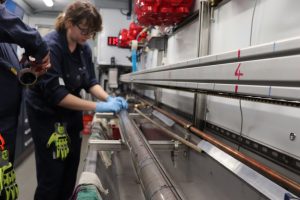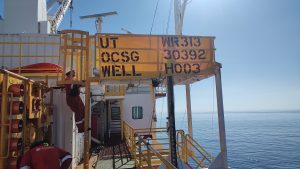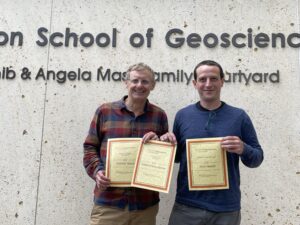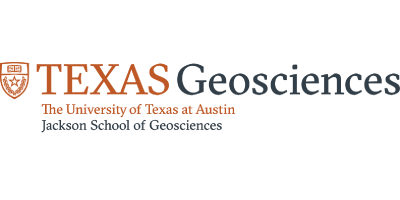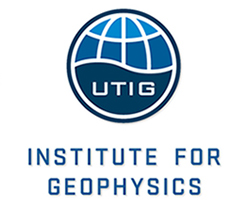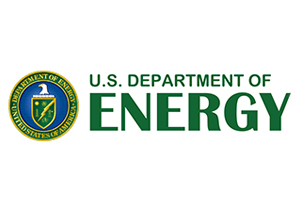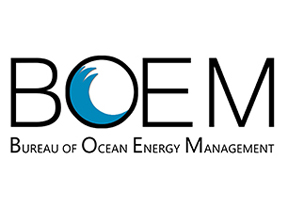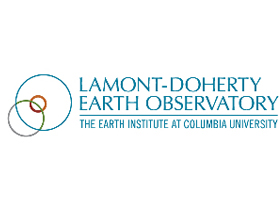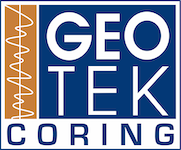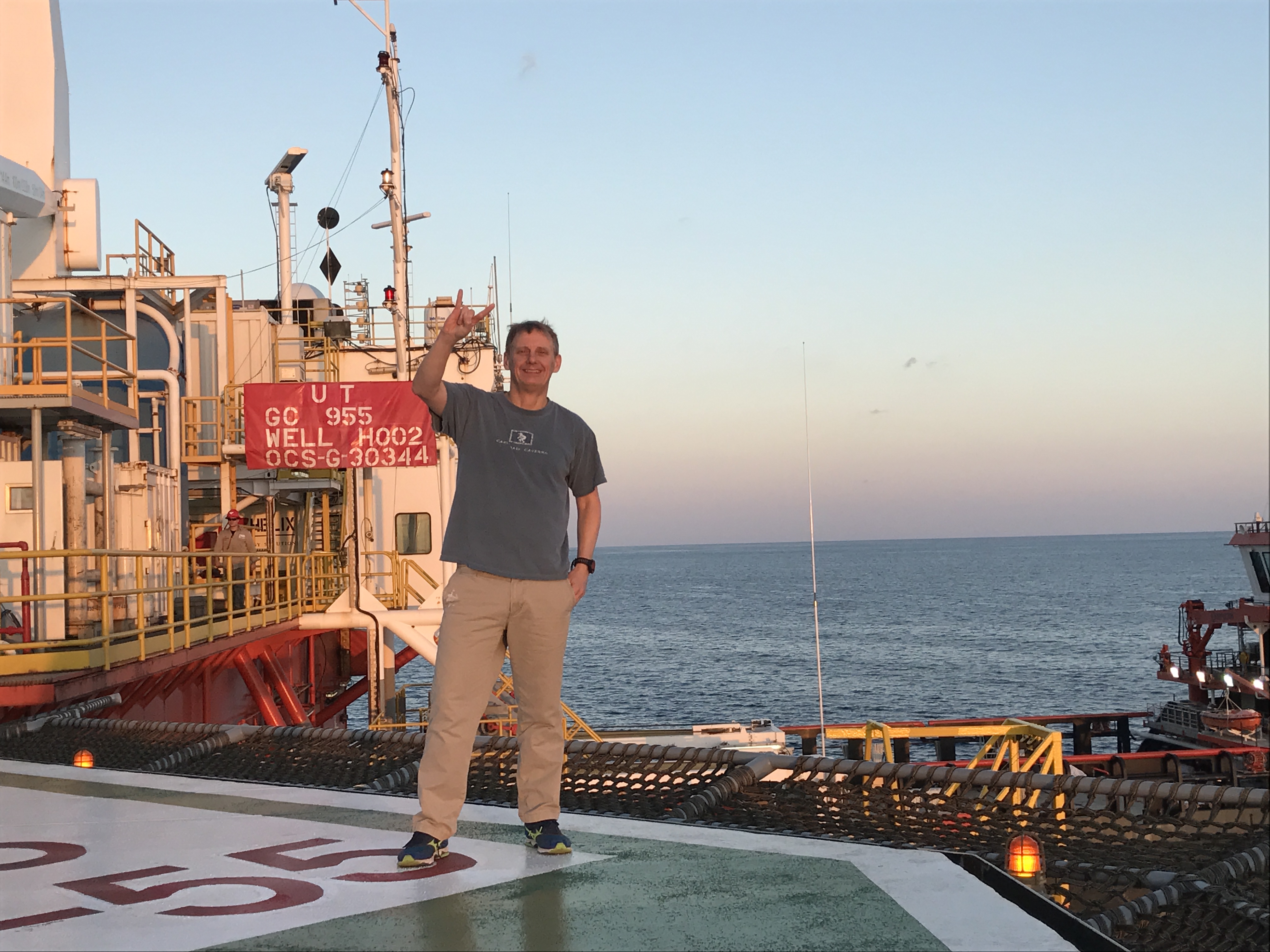
Fiery Ice: Methane Hydrates at the University of Texas
The University of Texas Institute for Geophysics (UTIG) is leading a multi-disciplinary study of methane hydrates in the Gulf of Mexico supported by the U.S. Department of Energy. Over the eleven year project (2014-2026), we are working to locate, drill, and sample methane hydrate deposits through multiple expeditions. We have built the infrastructure to store, manipulate, analyze and distribute pressurized samples that we acquire. This effort links UTIG, the Department of Earth and Planetary Sciences at the Jackson School of Geosciences, and the UT Department of Petroleum and Geosystems Engineering with Columbia University, Ohio State, the University of New Hampshire, the University of Oregon, the University of Washington, the USGS, and the BOEM.
We focus on methane hydrates as a future energy resource. Through analysis of hydrate core acquired and preserved at in-situ pressure, we are exploring the petrophysical habit, the methane concentration, the thermodynamic state, and the material behavior of coarse-grained hydrate reservoirs. Through downhole testing we will test the response of the hydrate reservoir to depressurization, one method of production. Our study will inform a new generation of process-based models simulating the genesis and perturbation of coarse-grained hydrate reservoirs.
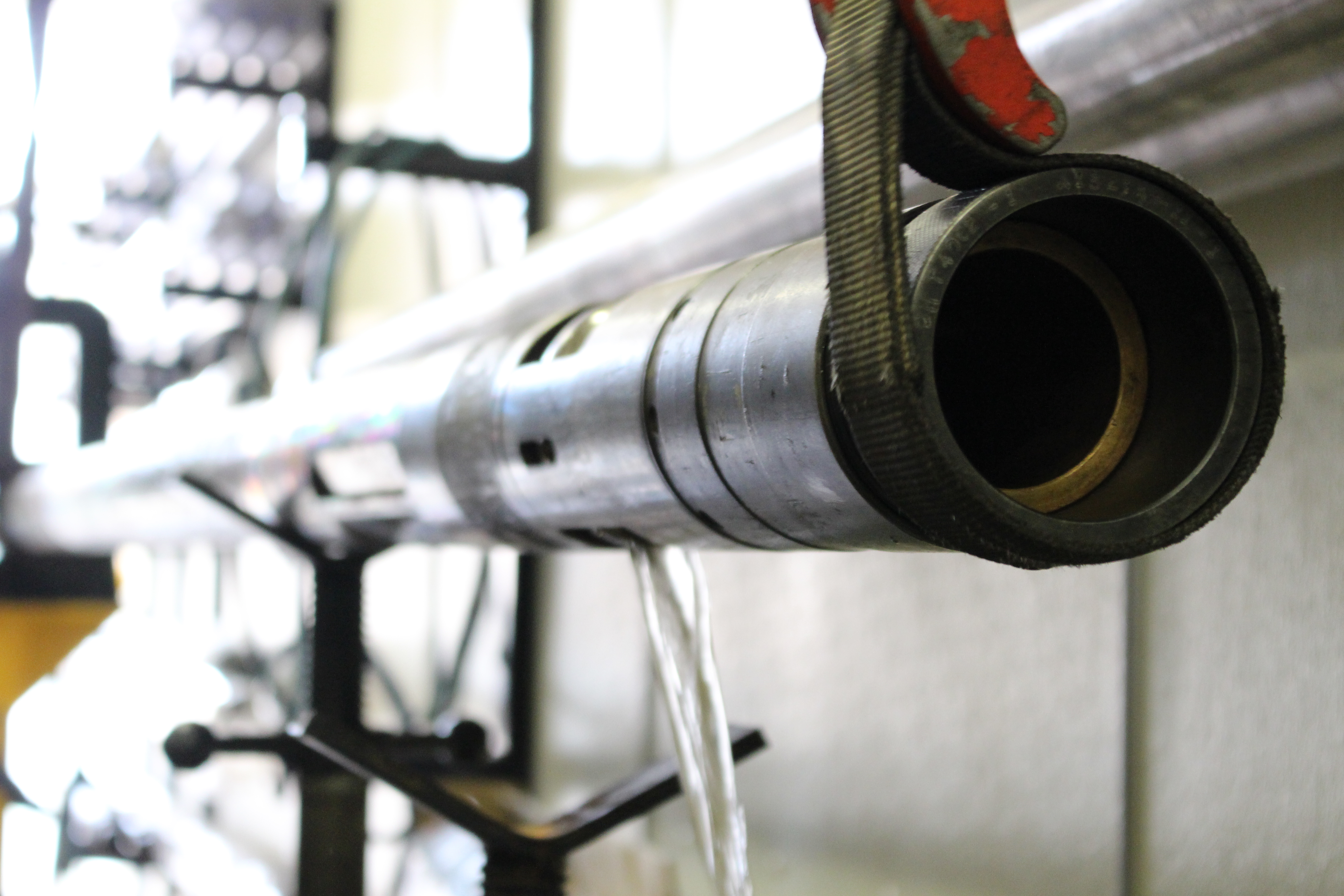
News & Media
- Mapping New Horizons: Graduate Research Sets Abby Varona on Career in Seismic Interpretation
- Exploring One of the Largest Carbon Caches on Earth
- Holding Tight
- Cutting Core, Seeing Signposts
- Progress from Delay
- The Stuff of Life at Sea
- Methane Hydrate: The Mission Continues
- UTIG Students Take Top 2022 Departmental Awards

About the Project
The U.S. Department of Energy (DOE) has awarded the University of Texas Institute for Geophysics (UTIG) funding for a project to drill, sample, and analyze deposits of frozen methane under the Gulf of Mexico that hold enormous potential to increase the world’s energy supply.
The agreement includes roughly $79.3 million in DOE funding and $36.5 million from industry and research partners.
The grant is allowing researchers to advance scientific understanding of methane hydrate, a substance found in abundance beneath the ocean floor. In addition to UTIG, the Department of Earth and Planetary Sciences at the UT Jackson School of Geosciences and the UT Department of Petroleum and Geosystems Engineering, the study includes researchers from Ohio State, Columbia University’s Lamont Doherty Earth Observatory, the University of New Hampshire, the University of Oregon, the University of Washington, the BOEM and the U.S. Geological Survey.
Estimates vary on the amount of energy that could be produced from methane hydrate worldwide, but the potential is huge.
In the Gulf of Mexico, where the team will be sampling, there is estimated to be about 7,000 trillion cubic feet (tcf) of methane in sand-dominated reservoirs located near the seafloor. For comparison, the United States used about 26 tcf of natural gas in 2013. So, methane hydrates have the potential to contribute to long-term energy security within the United States and abroad.
Data gathered during the eleven-year project will help scientists to more accurately estimate the occurrence and distribution of marine hydrates and lay the groundwork for future production efforts.


